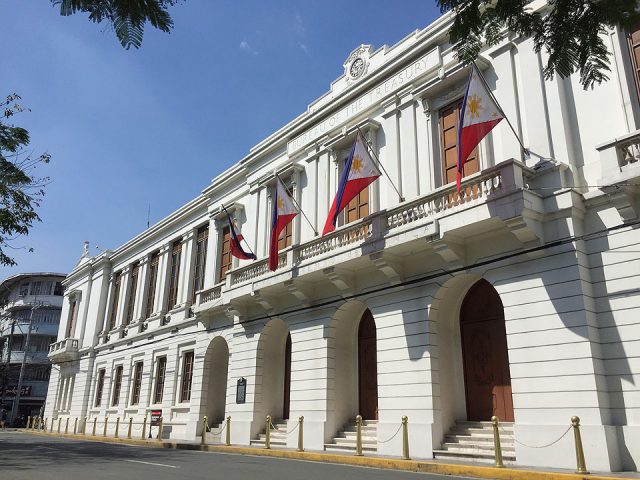A legacy of peace through orchestral music
Manila Symphony Orchestra unveils concert lineup
AS A prelude to its centennial year, the 99-year-old Manila Symphony Orchestra (MSO) has prepared a slate of concerts that includes a repeat of one of its most famous performances.
Founded in 1926, the MSO is one of Asia’s oldest orchestras. Through the years it has remained steadfast in its goals, holding accessible concert tours for the people across the country and also supporting the education of young music scholars, said its artistic director, Jeffrey Solares.
“This institution has weathered wars and economic recessions, and it will be celebrating its 100th year come July 2026,” he said at a press conference on April 23 in Circuit, Makati. “If you visit the archives and look at the MSO’s old programs, you can still get surprised and get goosebumps to see what this orchestra went through.”
MUSIC TO MARK WAR’S END
Kicking off the 99th season concert series — titled In Pursuit of Excellence — is a concert commemorating one of the shining moments in the MSO’s history.
Between 1945 and 1946, in the aftermath of the Battle of Manila which devastated the city, the orchestra held several post-liberation concerts marking the end of World War II. For the 80th anniversary of these concerts, the orchestra will take on the music it performed in that period, in the aptly titled Music for Peace concert on May 24.
At the press conference, they gave a preview of the repertoire for the concert, which includes Dvořák’s Symphony No. 9 “From The New World.” They played the second movement of the soothing yet melancholy piece, but it was enough to ease any remaining discomfort from the summer heat.
“It was part of MSO’s first postwar concert on May 9, 1945,” explained Mr. Solares of the piece. That performance was held at the roofless Sta. Cruz Church in Binondo amid a crowd of survivors. “It served as a tribute to the soldiers who helped liberate the country from the Japanese occupation.”
The concert’s repertoire will also include Beethoven’s Violin Concerto in D, Op. 61, which will feature Berlin-based violin soloist Emanuel John Villarin, under the baton of MSO musical director and conductor Marlon Chen.
“We are calling it Music for Peace because, after 80 years, it seems peace is still a very relevant goal for humanity. We can still find so many places where that elusive peace is not yet present,” Mr. Solares added.
The orchestra then flexed their versatility for the rest of the afternoon’s press conference: Ennio Morricone’s beautiful film score for Cinema Paradiso, with Sara Maria Gonzales as violin soloist, Filipino composer Conrado del Rosario’s dynamic “Meditation for Orchestra,” a first for the MSO, and Pyotr Ilyich Tchaikovsky’s iconic “Waltz” from Sleeping Beauty.
They closed with a John Williams medley, playing the themes from Star Wars, Jaws, Superman, Indiana Jones, and E.T., to the joy of many guests in attendance.
Mr. Solares said that playing both traditional and more accessible kinds of music is the way to go when it comes to bringing the orchestra closer to the people. For him, there is no need to “look down on the audience.”
“We mix it up. People will want to hear pop music and movie themes, but they are also ready to listen to a movement of a symphony. We want to show people that we can do both,” he said.
CONCERT LINEUP
The 99th season’s kickoff concert Music for Peace will be held on May 24 at the Aliw Theater at the CCP Complex, Pasay City, which is where the majority of the season’s concerts will take place.
It will be followed by A Night in Hollywood on June 28. Conducting fellows from the Los Angeles Film Composers Intensive, American guest conductor Angel Velez and Hungarian cellist Zoltan Onczay, will join the MSO for the concert.
The next concert, Brazilian Guitar and Cello, will be held on Aug. 9. It will feature music by legendary Brazilian guitarist and cellist Heitor Villa-Lobos and Filipino composer Jeffrey Ching, and will showcase Brazilian soloists Fabio Presgrave on cello and Fabio Zanon on guitar, as well as Filipino soprano Stefanie Quintin-Avila.
Another milestone concert will be Butterfly Lovers Violin Concerto on Sept. 7, which will have violinist Monica Bacus and a Filipino children’s choir performing with the MSO. On Sept. 27, Dancing with Tchaikovsky will welcome cellist Damodar Das Castillo and guest conductor Alexander Vikulov to the concert, to bring to life Tchaikovsky’s Rococo Variations and the suite from the Sleeping Beauty ballet.
Closing the year will be The MSO 100th Anniversary Concert, to be held on Jan. 22, 2026. It is the only one with a different venue from the rest, as it will be held at the Samsung Performing Arts Theater in Circuit, Makati. The guests are pianist Muyu Liu and conductor Darrell Ang.
Through these concerts, the MSO hopes to raise funds for its attached organizations — the MSO Foundation, the MSO Music Academy, and the Manila Symphony Junior Orchestra.
The MSO will launch a commemorative book in 2026 chronicling the orchestra’s journey over 100 years. It will include contributions from its musicians and guest conductors.
Tickets for the upcoming concerts are available via TicketWorld. For more information, visit their social media pages. — Brontë H. Lacsamana




















